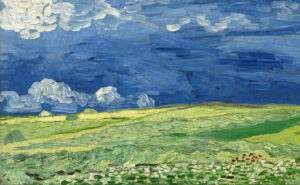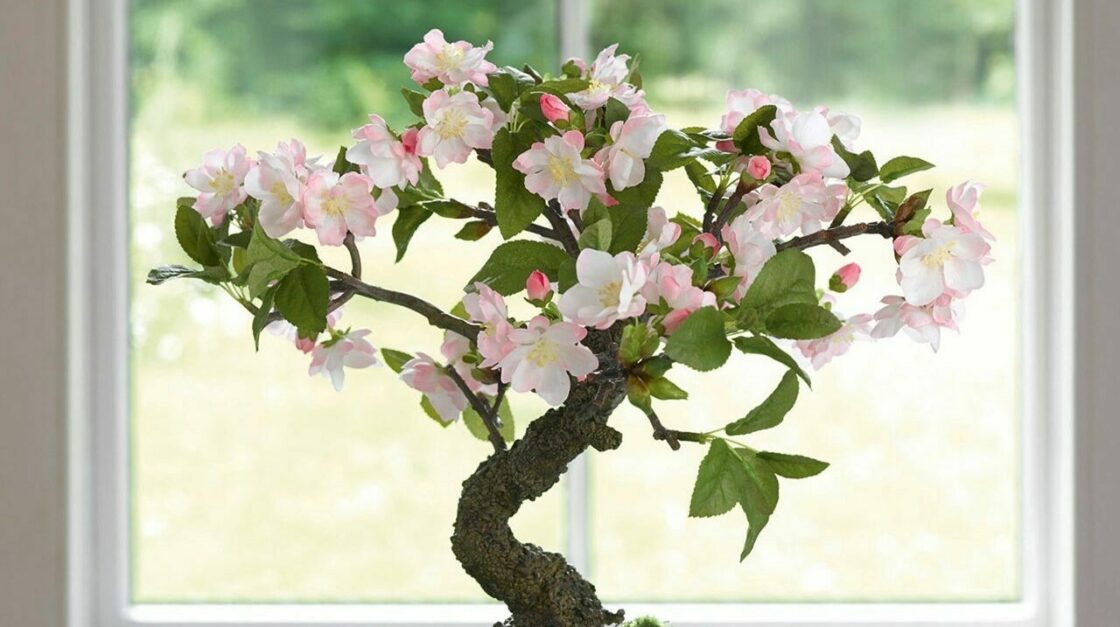Great poetry can be any length: long poems can sprawl across pages like interstate highways, but short poems can be just as moving and powerful. Short form poetry, which includes forms like micropoetry, pack lots of meaning in a small amount of space.
The best short poems make each word carry tremendous weight, and this article is all about how to write a short poem powerfully.
How do poets condense so much meaning in such a small space? Let’s take a deeper look at short form poetry, including some famous short poems and strategies for how to write a short poem.
How to Write a Short Poem: Contents
Features of Short Poems
There’s no commonly accepted definition for what makes short poetry short. In fact, it’s not even a genre of poetry. Unlike long poetry—which comprises epic and narrative poems, as well as much of Modernist poetry—short poems don’t have specific conventions ascribed to them.
In other words, if you ask different poets what counts as a short poem, you’ll get many different answers.
For the purposes of this article, we’ll define short form poetry as anything 9 lines and under, OR any poem that uses 60 words or less. This definition is somewhat arbitrary, but poetry that is over 9 lines and/or 60 words tends to use both abstract and concrete images to explore an idea. As we discuss later, short poetry should focus on the concrete.
We define short form poetry as anything 9 lines and under, or any poem that uses 60 words or less.
The sonnet, for example, is a 14-line poem that often grapples with love, and though sonnets are by no means “long,” they often have abstract qualities not found in short poems.
Qualities of Short Poems
Short poems are, well, short. But the best short poems share certain qualities that make them potent pieces of literature.
Short form poetry should have all or most of the following features:
- Concision: In addition to omitting needless words, every word should do a lot of work in the poem. Small words, like articles and conjunctions and adverbs, should be sparse and only used to connect concrete nouns and verbs.
- Concreteness: Short poems should present clear, concrete images. Often, these concrete images will work as symbols, representing abstract ideas in juxtaposition with each other.
- Ephemerality: Often, short poems will represent fleeting moments of emotion—feelings that occur in a concrete moment of time. Short form poetry presents slices of life: moments of emotions crystalized into language.
- Simplicity: A short poem should be easy to understand. The language should be accessible, and the ideas should be clear to the reader, even if they’re abstract and open-ended.
Short form poetry presents slices of life: moments of emotions crystalized into language.
Common literary devices in short poetry are metaphor, symbolism, and juxtaposition.
Article continues below…
Short Poetry Courses We Think You'll Love
We've hand-picked these courses to help you flourish as a writer.

Crafting Poems in Form: Rhyme, Meter, Fixed Forms, and More
Working within the guidelines of a fixed poetic structure can make your poetry more creative, not less. Find freedom in...
Find Out More
Poems of All Sizes: Haiku, Tanka, and Japanese Poetic Forms
Explore the history and poetics of Japanese poetry forms, and write haiku, tanka, renga, haiga, and linked verse poetry.
Find Out More
Even Smaller: Adventures in Short-form Writing
Less is more in this bite-sized writing class, where you'll learn how to tell complete stories under the tightest word...
Find Out MoreOr click below to view all courses.
See CoursesArticle continues…
Types of Short Form Poetry
Many examples of short poems are free verse, meaning they don’t follow a specific form, style, length, or rhyme scheme. Additionally, there are a few forms of poetry that are always short. These include:
- Haiku
- Tanka
- Limerick
- Cinquain
- Rispetto
- Monostich
- Triolet
- Shadorma
- Sijo
You can explore some of these forms at our article What is Form in Poetry? 15 Poetic Forms to Try.
Micropoetry
One contemporary type of short form poetry is the micropoem. Micropoetry (sometimes stylized as micro poetry) is a distinctly 21st century invention, and its prominence has risen alongside the world of text messaging and microblogging.
A micropoem is a poem that fits within the confines of modern messaging tools. Examples of micropoetry include poems that fit inside tweets, captchas, or SMS messages. Many micropoems are also haikus or monostiches.
A micropoem is a poem that fits within the confines of modern messaging tools.
You’ll find micropoetry most frequently on sites like Twitter, such as these uplifting pieces. There are also certain literary journals dedicated to the publication of micropoetry, many of which are listed here at Poets & Writers.
Famous Short Poems
Before we discuss how to write a short poem, let’s look at some famous short poems in action.
For each example, we’ll examine how it fits within the 4 main qualities of short form poetry, as well as the poem’s use of literary devices.
Dreams
By Langston Hughes
Hold fast to dreams
For if dreams die
Life is a broken-winged bird
That cannot fly.
Hold fast to dreams
For when dreams go
Life is a barren field
Frozen with snow.
Langston Hughes (1902-1967) was a prominent Jazz Poet and member of the Harlem Renaissance. His poetry embodied black life and was written specifically for a black audience, transcribing his daily experiences in brief, emotive language.
An important feature of Jazz Poetry is its serendipity: the Jazz Poem is not planned for, it simply emerges, following the improvisations of the writer like a jazz musician experiments with instruments. Many works of Jazz Poetry, including much of Hughes’ work, counts as short form poetry.
In “Dreams,” Hughes presents two simple metaphors. Life without dreams is both “a broken-winged bird” and “a barren field / frozen with snow.” Each image is equally haunting: a bird without flight has no meaningful life to live, and a barren field cannot support life even after the seasons change.
In many ways, this poem is a warning: once a life loses its dreams, it is near-impossible to retrieve those dreams. The images in this poem are paradoxical, forcing the reader to consider if a life without dreams is life at all.
- Concision: The poem is 8 lines and 33 words. Within this, the poem offers two stark images, each of which presents a similar metaphor, and each metaphor building a sense of irony and caution.
- Concreteness: The poem’s central images are a flightless bird and a frozen, barren field. Each image invoked is haunting and absolute. One cannot help but consider a winter of the soul.
- Ephemerality: The poem’s brevity highlights the fleeting nature of dreams, and the imperative to hold them as tight as possible.
- Simplicity: The language of the poem is clear and accessible. It is structured so that an image and metaphor are presented in two sets of four lines, and when juxtaposed, those images reinforce each other.
- Literary Devices: “Dreams” makes powerful use of metaphor, juxtaposition, and paradox.
Old Pond
By Matsuo Bashō
An old silent pond…
A frog jumps into the pond,
splash! Silence again.
“Old Pond” is a beautiful, striking poem—but much of that beauty is lost in translation. The haiku, like many short poems, is near-impossible to translate meaningfully, so some background is necessary here.
Matsuo Bashō (1644-1694) was a prominent poet of Japan’s Edo period and is considered a master of the haiku form. Haiku were used to summarize a longer passage of prose, often acting as prologue to larger works.
Additionally, the haiku tradition often involves reminiscences about nature, juxtaposing two images before linking them in some surprising way. Bashō’s haiku combine Japanese symbolism with his own experiences travelling through the wilderness.
Although it’s not apparent in the poem’s word choice, “Old Pond” is actually about the changing of the seasons. In Japanese poetry, frogs symbolize the springtime; here, a frog (Spring) jumps (suddenly arrives) into an old silent pond (Winter). In other words, the frog is breaking the ice over an immobile pond, and the “splash!” is both a literal and symbolic celebration. Winter is truly over; the world rejoices.
The “silence again” leaves the haiku open-ended. Different translations of the haiku don’t include this part, and it may have been written to adapt the poem to 5/7/5 syllables in English. Nonetheless, “silence again” might suggest the dead quiet of the coming summertime, or else the quickness with which seasons change before the long quiet of Winter.
- Concision: The poem is 3 lines and 17 syllables, which is common of most haiku (though variations exist in translation and among different poetry schools).
- Concreteness: The poem provides a simple concrete image: a frog splashing in water.
- Ephemerality: “Old Pond” focuses on a brief moment in time, using this moment to signify the passing of seasons.
- Simplicity: Bashō’s haiku is written and translated in accessible language, using a clear image to represent a global idea.
- Literary Devices: In keeping with the haiku tradition, “Old Pond” makes use of symbolism to tell a story.
Triad
By Adelaide Crapsey
These be
Three silent things:
The falling snow… the hour
Before the dawn… the mouth of one
Just dead.
Adelaide Crapsey (1878-1914) is widely heralded as the inventor of the modern cinquain. This form—like the poem “Triad” above—is composed of 5 lines. The first and fifth line have 2 syllables; the second line has 4 syllables, the third 6, and the fourth 8.
Following this 2/4/6/8/2 format, “Triad” juxtaposes three images which, though seemingly unalike, are each united in their quietude.
The “falling snow” and “the hour / Before the dawn” are both natural images, each hushed in their own way. This makes the image of “the mouth of one / Just dead” all the more surprising. Perhaps by juxtaposing images of nature, the cinquain suggests that there’s still a moment of life in the dead mouth, though it remains forever silenced.
- Concision: “Triad” is 5 lines, 22 syllables, and 19 words. Three images are cleverly juxtaposed in this limited space.
- Concreteness: The poem presents three images, each concrete and unique in their own way.
- Ephemerality: Each image in “Triad” is a brief moment in time. The central image of a dead person’s mouth reinforces this sense of ephemerality: it has just happened and yet suggests something fleeting.
- Simplicity: The cinquain’s language is accessible and its images are cleanly juxtaposed.
- Literary Devices: “Triad” makes use of juxtaposition to suggest likeness between three different images.
My Heart Leaps Up
By William Wordsworth
My heart leaps up when I behold
A rainbow in the sky:
So was it when my life began;
So is it now I am a man;
So be it when I shall grow old,
Or let me die!
The Child is father of the Man;
And I could wish my days to be
Bound each to each by natural piety.
William Wordsworth (1770-1850) was a prominent poet of the English Romantics. As a poetic movement, Romanticism rejected Enlightenment ideals, praised the beauty of the natural world, and sought to embody “the spontaneous overflow of powerful feelings.”
[Poetry is] the spontaneous overflow of powerful feelings. —William Wordsworth
“My Heart Leaps Up” achieves these 3 goals. The central image of the poem is a rainbow, but the poem itself focuses on the speaker’s emotions in that moment of recognizing the rainbow. In praising the rainbow’s beauty, the speaker hopes never to lose that child-like awe of nature—going so far as to say that “The Child is father of the Man”, or that adults learn how to love the world through children.
- Concision: “My Heart Leaps Up” is 9 lines and 61 words. It just borders our definition of short form poetry; even at this length, the poem starts to deal with abstract concepts like “natural piety.” Nonetheless, Wordsworth walks us through a philosophy of life—appreciating nature’s beauty—using simply the image of a rainbow.
- Concreteness: In addition to the main image of a rainbow, the poem offers us the line “The Child is father of the Man.” It seems as though Wordsworth is imploring the reader to picture the rainbow for themselves: imagine a rainbow so radiant and mysterious that it invokes a child’s sense of awe.
- Ephemerality: In the moment of observing this rainbow, the speaker’s “heart leaps up,” meaning this poem examines merely a heartbeat. This keeps with Wordsworth’s definition of poetry as “the spontaneous overflow of powerful feelings.”
- Simplicity: “My Heart Leaps Up” uses accessible language, which isn’t always true of Romantic-Era poetry. Additionally, it only focuses on one core image, keeping it clear in the reader’s mind.
- Literary Devices: Wordsworth uses personification to describe his heart’s reaction to the rainbow. Additionally, the rainbow is juxtaposed with the image of a child being father to man.
We Real Cool
By Gwendolyn Brooks
The Pool Players.
Seven at the Golden Shovel.
We real cool. We
Left school. We
Lurk late. We
Strike straight. We
Sing sin. We
Thin gin. We
Jazz June. We
Die soon.
Gwendolyn Brooks (1917-2000) was a prolific poet of the 20th century, transcribing inner city life into 20 collections of poetry. Written in 1959, “We Real Cool” is one of the the most famous short poems of Jazz Poetry, and the poem inspired Terrance Hayes’ invention of The Golden Shovel form.
As suggested by the poem’s subtitle, “We Real Cool” is about seven boys playing pool at a bar called The Golden Shovel. The poem explains why the boys think they’re “real cool”—they leave school, stay up late, get in fights, drink, etc. Through this, the final line comes as a surprise: “We / Die soon” is unexpected coming from the speaker, given the poem’s boastful nature. This final, climactic line shows us the poet’s tone towards these truant boys, underscoring the poem’s themes of youth and rebellion.
Perhaps most intriguing about the poem is that most lines end with “we.” The conventional advice given to poets is to end each line on concrete nouns and verbs. So, why end 7 lines with a pronoun? In interviews, Brooks has said that the “we” should be read softly, perhaps suggesting the boys’ lack of identity outside of their debauchery. “We” also connects each line, suggesting that the boys’ revelry is goaded on by each other.
- Concision: “We Real Cool” is 8 lines and 32 words long (including the subtitle). Despite this brevity, it covers themes of youth and rebellion.
- Concreteness: In addition to the subtitle, which sets the scene of the poem, “We Real Cool” includes images of late nights, fist fights, gin, and leaving school.
- Ephemerality: The poem doesn’t linger on any specific image. This is to emulate the speed at which these boys live life, flitting from one pleasure to another, as well as the speed with which they seem to careen towards death.
- Simplicity: The language of the poem is clear and accessible, as well as lyrical and compelling. The only phrase which may be confusing is “Jazz June.” Some readers have interpreted “Jazz” in a sexual way, though Brooks included this line simply to set the scene (Jazz music in June).
- Literary Devices: “We Real Cool” makes use of juxtaposition, symbolism, and epistrophe, which is the use of the same word or phrase at the end of a line. Several lines of the poem are allusions to the Seven Deadly Sins.
[you fit into me]
By Margaret Atwood
you fit into me
like a hook into an eye
a fish hook
an open eye
Margaret Atwood (1939- ) is a prolific poet and author. Best known for her novel The Handmaid’s Tale, Atwood has also published numerous collections of poetry.
[you fit into me] was written in 1971. (The title is in brackets because it is also the poem’s first line.) The first stanza describes a simple image: a hook in an eye. This is a sewing reference: hooks and eyes are small metal devices that discreetly fasten ripped or undone clothes. In other words, the first stanza suggests that “you” and “me” fit each other perfectly.
The second stanza alters this image entirely. A fish hook in an open eye presents an uncomfortable and disquieting image: something trapped, sharp, painful.
This poem exposes Atwood’s mastery of short form poetry. She presents two very different images that use very similar language, suggesting that “you” and “me” have a seemingly perfect relationship, but it’s actually agonizing for the speaker, the “eye.” Additionally, the “open eye” suggests that the speaker is fully aware of this agony, watching herself be punctured by the hook, but is trapped beneath the surface of their perfect-sounding relationship.
Atwood has a knack for word play and gutting imagery, which she shows us in this concise example of short poetry.
- Concision: [you fit in me] is 4 lines, 2 stanzas, and 16 words long. It presents two contrasting images, each with similar word choice. This poem is micropoetry length, though the micropoetry genre is a 21st century invention.
- Concreteness: Both images are expressed clearly to the reader. Though the reader may not be familiar with the sewing terminology in the first stanza, the second stanza’s imagery is uncomfortable and painful.
- Ephemerality: This poem’s brevity highlights the painful intensity of the speaker’s relationship, and the soundless pain of a hook fitting in an eye.
- Simplicity: The word choice in [you fit in me] is clear and accessible, with each image using similar words but presenting starkly different images.
- Literary Devices: Despite its brevity, this poem is heavy with symbolism. “Hook” represents “you” and “eye” represents “me.” The juxtaposition of these two images further describes the speaker’s intense feelings.
How to Write a Short Poem in 6 Easy Steps
Did you find yourself inspired by these famous short poems? Want to write short form poetry or micropoetry yourself? Follow these 6 steps.
1. Consider Short Poetry Forms
You may decide to write your short poems in free verse, but first do some research on poetry forms. You might decide you like the challenge of the haiku, the cinquain, or the triolet, and having a form to work with can help you think critically about your word choice.
2. Start with a Moment of Emotion
In most of our examples of short poems, the speaker considers a simple moment in time: the sight of a rainbow, a frog leaping in a pond, the mouth of someone who just died, etc.
Follow this example. Think of a brief moment you’ve observed that led to some powerful emotions. Observe the image in your mind and consider your feelings: what thoughts, ideas, or sentiments bubble to the surface?
For more on this writing process, you may be interested in our article Writing for Mindfulness, or our article on how to start a poem.
3. Describe That Moment with Concrete Imagery
Start writing down your observations in that moment. What do you see, hear, smell, taste, or feel?
You don’t need to describe the moment itself—you can also embody your emotions in concrete language. When Langston Hughes describes life without dreams as “a barren field / Frozen with snow”, he’s probably not observing that field directly, but experiencing and transcribing his emotions through imagery.
Some short form poetry has only one central image, but many pieces juxtapose multiple images together. Jot down the sensations you experience—without trying to be “poetic” or sophisticated—and let the poem take shape of its own accord.
4. Experiment with the Placement of Those Images
Juxtaposition is a powerful tool in the hands of poets, especially writers of short poems. Play around with the images you’ve written down, paying attention to how each image interacts with the other.
Juxtaposition is a powerful tool in the hands of poets.
You may find that different juxtapositions result in different stories and emotions; observe this, consider each placement thoroughly, and let the poem decide what’s best. Eschew the impulse to control the poem’s meaning, and allow the poem to sweep you off your feet. You’ll know how to place these images based on how they resonate in your heart.
5. Look for Literary Devices
The best short poems use imagery to build metaphors and symbols. Does your poem’s imagery represent something deeper or more abstract? Can you insert “like” or “as” to make similes? Can you insert “is,” “was,” “are,” “were” or other being verbs to make metaphors?
The best short poems use imagery to build metaphors and symbols.
Don’t try to force literary devices into the poem, but use them to highlight meanings that are already taking shape.
6. Cut or Add Words Where Necessary
Lastly, consider the poem’s sound. Does it flow from line to line? Does its musicality capture the rhythm of your emotions? You may have to add, cut, or edit words to make this happen. Continue to experiment with word choice, play with sounds relentlessly, and consider the weight of each word.
Chipping and refining the poem like this will feel like cutting a diamond with another diamond: using words to sharpen other words, the poem’s final form emerges.
For additional advice on how to write a short poem, check out our article How to Write a Poem, Step-by-Step.
Write Brilliant Short Poems at Writers.com
Whether you’re writing short form poetry or long form epics, the courses at Writers.com are designed to polish and enhance your writing. Take a look at our upcoming poetry courses, and join the Writers.com Community for our one-of-a-kind writing community.


This information was very appreciated! It has been far too much time passed since I first learned about short forms of poetry in school. Hopefully I can experiment with these different writing styles and push that block out of my way!
thanks for the tips they are real handy
slowly and sadly we laid him down
in the field of his fame, fresh and gory
And we carved not a line and we raised not a stone
But we left him a.one in his glory
who wrote this?
Hoping someone remembers this quote ! Thanks
Hi Isabel,
That’s “The Burial Of Sir John Moore At Corunna” by Charles Wolfe. 🙂
Wow
So, the poems with 2 stanzas be called short poems?
Hi Maya,
Good question! “Short” relates more with the number of lines, not the number of stanzas. A two stanza poem might be short, but if both stanzas had 12 lines, for example, then it would not be a short poem (as based on our somewhat-arbitrary definition).
I love that we real cool. I’ll try writing my own version of it.
https://grand-little-things.com/submission-information/
Site to publish short poems.
Hi Sean,
I appreciate your helpful articles on poetry. I would like to print them out and keep them all together. Is there a way to get PDF copies? I wish they were compiled in a book 🙂
Hi Lynne,
I’m so glad you find these articles helpful! You can save a PDF by Typing “CTRL+P” (on a mac: “command+P”)—this will pull up the “print” page, where you can save the article as a PDF onto your computer.
Happy writing!
Thanks so much!
That very interesting
Thank you. I really appreciated this article. It was very helpful to me and informative. I will print them out and keep them close. Thank you.